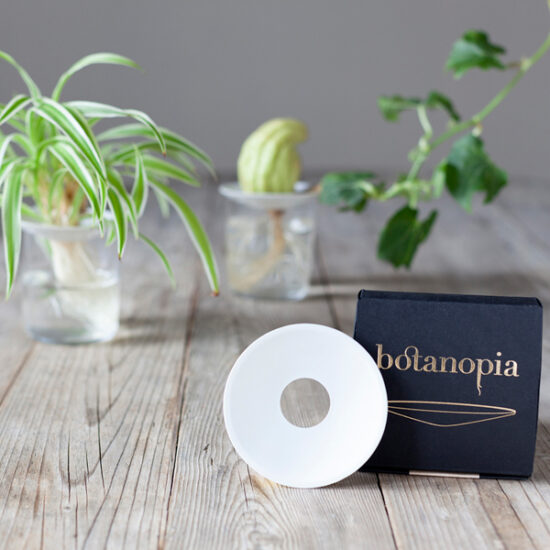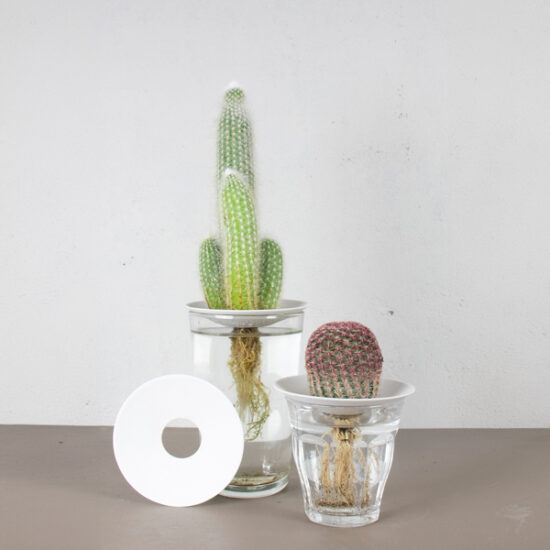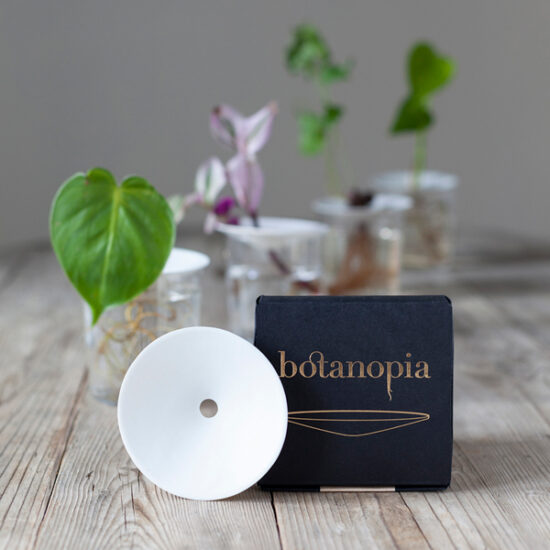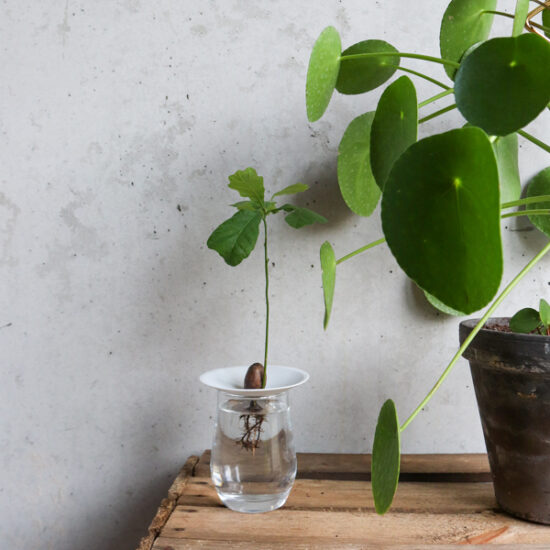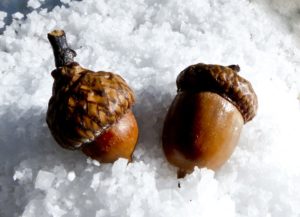Here’s the text version of the basic technique. However please refer to the videos for small variations that work best for each variety.
Larger tree seeds like acorns, chestnuts, and conkers work well. Smaller bulbs such as crocus, snowdrop or muscari are also very easy to grow. To Botanopiathem indoors all year round, you will need to trick them into thinking now is the perfect time to germinate. Follow the “cold treatment method” below.
Raw nuts like almonds, peanuts, cashews and pistachios or citrus fruit pits like lemon and oranges, once sprouted, will also fare well with our Botanopia Germination & Propagation Plate. Avocado and mango pits are a big favourite. Follow the “baggie method” below.
Feel free to experiment with fast growing seeds like beans and legumes, or even (sweet) potatoes, lemongrass and ginger! You can also use it to root small plant cuttings, a favourite that’s sure to succeed is the spider plant, but succulents and cacti are good candidates.

